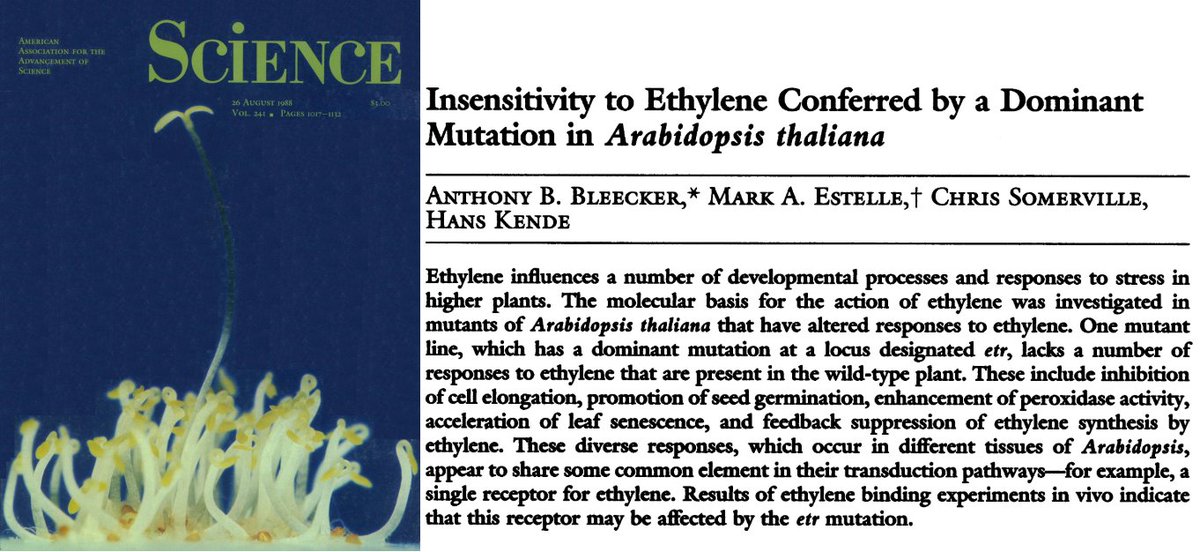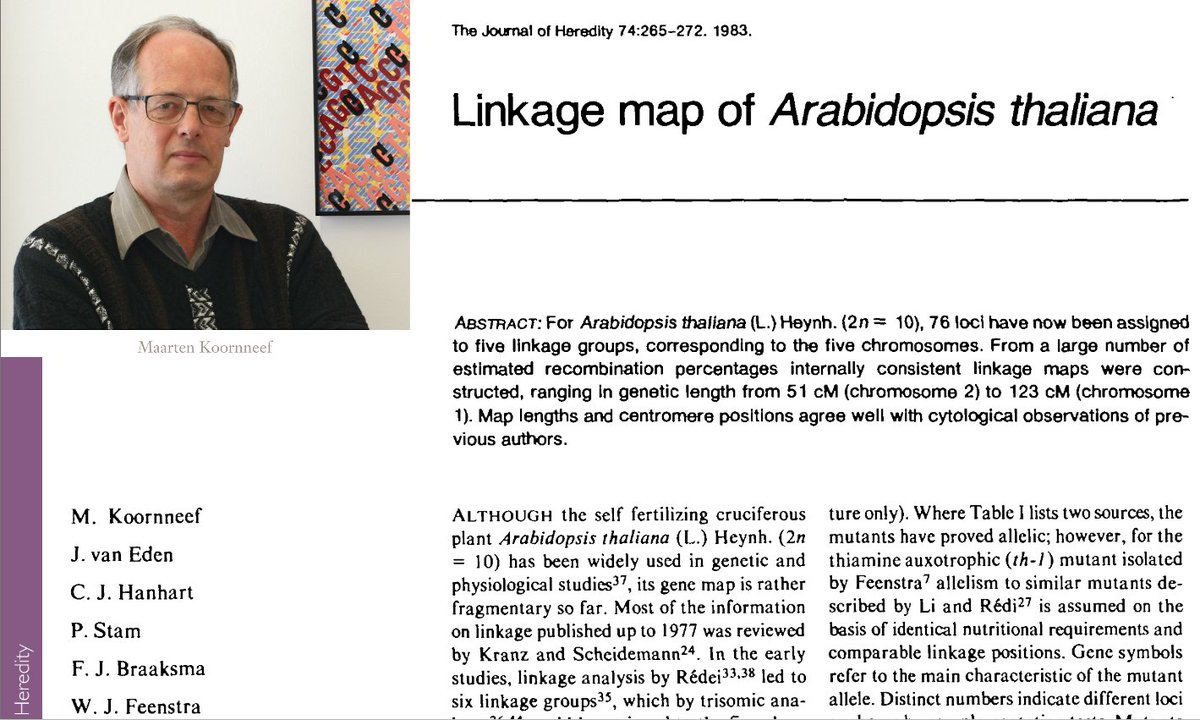
#PlantScienceClassics #18: Ethylene triple response mutants. 35 years ago Anthony Bleecker et al. exploited the triple response phenotype to identify the #ethylene receptor ETR1. The ethylene story is another example for #PlantBlindness @NobelPrize. doi.org/10.1126/scienc… 

Ethylene is a gaseous #phytohormone with a wide range of roles from plant development to immunity. Ernest Starling in 1905 defined a hormone as mobile chemical messenger synthesized by a multicellular organism, that has physiological activity distant from the site of synthesis. 

The effect of ethylene on plants was first noted in the 1900s, when it leaked from illumination gas used in lamps and affected plants nearby. But it was Dimitry Neljubow, who in a series of experiments identified ethlyene as the active substance in the illumination gas in 1905.
Neljubow already used the #TripleResponse. He noted pea seedlings growing shorter, thicker epicotyls which bend horizontally, when grown with light from illumination gas, but not outdoors or in the dark. He then tested all components distilled from the gas & identified ethylene. 

This work by Neljubow showed that the gaseous ethylene could induce physiological effects. Part 1 of Starlings definition of a hormone. Now part 2 was missing: That ethylene is actually produced by the organisms in which it functions.
Scientists have long noticed that some fruit affect other plants around them in the same way as ethylene. For example, apples could affect the sprouting of potato tubers – just like ethylene treatment. It was therefore speculated that some plants may be able to produce ethylene.
And in 1934, Richard Gane was indeed able to distill ~0.6 g of ethylene from the gas given off by 60 pounds of apples over 4 weeks. So part 2 of the definition of a hormone, "produced by the organism itself", also seemed to apply in the case of ethylene. 

In 1935 William Crocker, Alfred Hitchcock,& Percy Zimmerman published more data on ethylene effects on plant growth & senescence, and first explicitly put it in one group with the #phytohormone #Auxin in their report “Similarities in the effects of ethlyene and the plant auxins”.
The next major leaps came after the adoption of Arabidopsis as model plant for genetics:
Chris Somerville had already demonstrated how Arabidopsis mutants could readily be used to identify new components of signaling pathways.
https://twitter.com/somssichm/status/1444200882728366082
Chris Somerville had already demonstrated how Arabidopsis mutants could readily be used to identify new components of signaling pathways.

Somerville teamed up with Anthony Bleecker, @mestelle & Hans Kende to screen for Arabidopsis mutants with an altered triple response: Seedlings grown in darkness with ethylene have (1) shorter and (2) thicker hypocotyls & (3) exaggerated apical hooks - Clearly visible phenotypes. 

By screening for mutants without this response, the team identified the ETR gene, coding for one plant ETHYLENE RECEPTOR. And using the same approach, Plinio Guzman & @JosephKieber from @JoeEcker's lab quickly added the receptor CTR1 and the signaling regulator EIN2 (1990/93). 



So by the 1990s, it was clear that ethylene was indeed a gaseous hormone,& several parts of its signaling pathway were known. And on top of its general meaning for plant development, ethylene also quickly became commercially important to control fruit ripening in transport. 

As this was the first discovery that a gas can act as a signal molecule in an organism, and with the finding that one cell produces the gas, which then penetrates through membranes & regulates the function of another cell representing an entirely new principle for signalling...
...the @NobelPrize committee awarded the 1998 Prize in Physiology/Medicine to... 🥁... Robert Furchgott, Louis Ignarro & Ferid Murad, who just 20 years prior identified “nitric oxide as gaseous signalling molecule in human cells” - over 40(!) years after ethylene was described! 

In the committee's reasoning, they used the exact words I used 2 tweets before this one to describe ethylene, including the obviously wrong claim that "this (nitric oxide) was the first discovery that a gas can act as a signal molecule in the organism"! 😳🙄😖 #PlantBlindness 



Hans Kende commented on this decision in @ScienceMagazine, the journal that published their 1988 ETR paper, but as we all know, still nothing has changed, and pioneering plant work is still regularly overlooked.
science.org/doi/10.1126/sc…
science.org/doi/10.1126/sc…

Since then, we have learned a lot more about ethylene signaling in plants, and you can find a nice overview article by Brad Binder here: jbc.org/article/S0021-… , and a history of ethylene research here: link.springer.com/article/10.100…
• • •
Missing some Tweet in this thread? You can try to
force a refresh



















